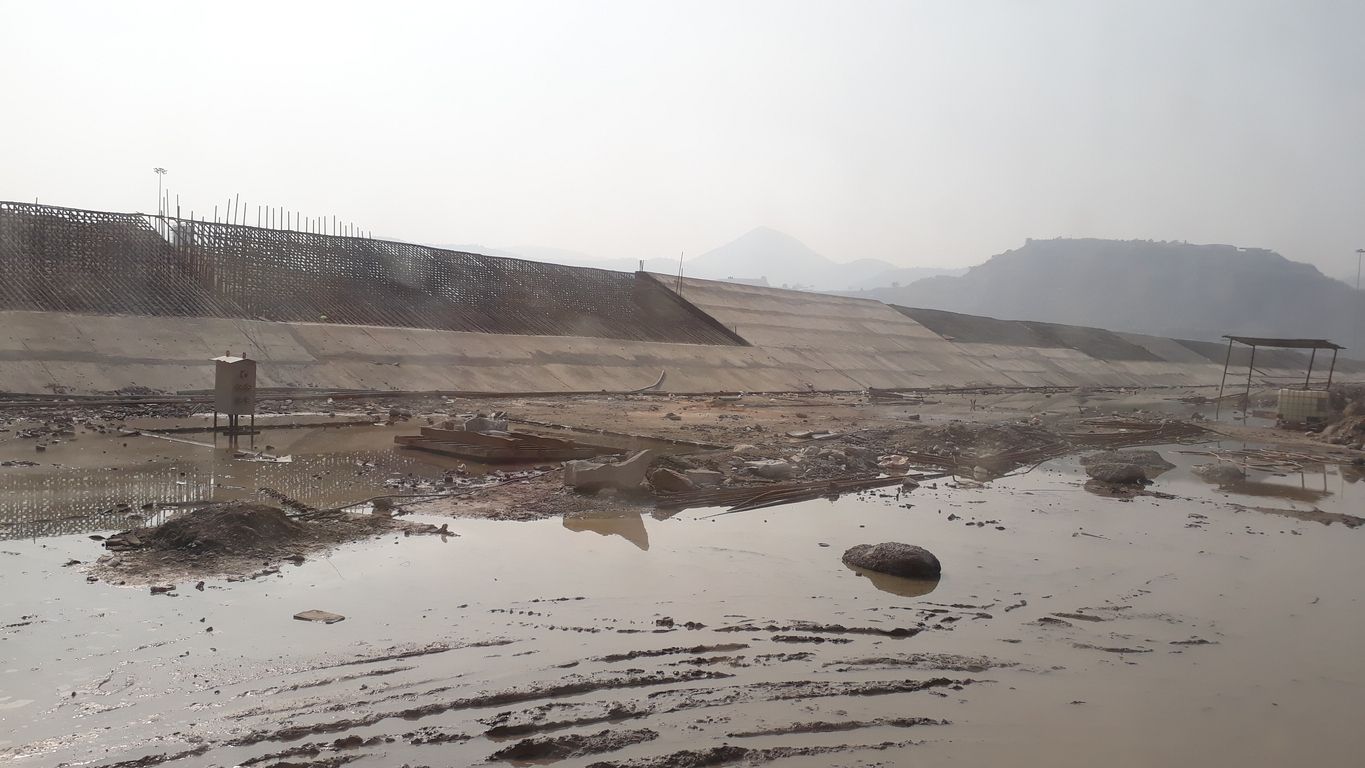
Polavaram project, Andhra’s lifeline, caught in a bureaucratic maze

The Polavaram multi-purpose irrigation project, considered the lifeline of Andhra Pradesh, is hanging fire. With the Centre dragging its feet on releasing funds, a shadow of uncertainty looms large over the ₹58,000 crore project designed to irrigate 7.2 lakh acres across the coastal region, generate 1,000 MW of power and supply drinking water to 28.5 lakh people, including residents of the proposed executive capital of Visakhapatnam.
This is being taken up as a national project with central funds as per the promise made under the Andhra Pradesh Bifurcation Act. However, it is caught in a bureaucratic maze and a row has now erupted over who should foot the bill for the relief and rehabilitation of over one lakh people likely to be displaced by the mega project.
Conceived in the 1940s when the present day Andhra Pradesh was part of the Madras Presidency, Polavaram remains an unfulfilled dream of the people of coastal Andhra.
While conceding the demand for statehood to Telangana, the UPA government had offered a few incentives to compensate the residuary state of Andhra Pradesh for losing out capital Hyderabad to Telangana. Declaring Polavaram as national project was one of the inducements offered in AP Reorganisation Act of 2004. This meant that the central government will build the project.
Mounting bills
The Centre recently made it clear that the completion of the project will depend on how fast the state government settles the issue of rehabilitation and resettlement (R&R) of families displaced by the project.
In a statement tabled in the Parliament recently, the Centre said that the funds will be released only after the state government submits the audit reports for the expenditure made before April 2014, when it was declared a national project. While ₹5,130 crore was spent by then, the state government had submitted audit reports for expenses worth ₹3,000 crore.
The central budget was silent on the release of funds, prompting state finance minister Buggana Rajendranath to raise objections over the inordinate delay in reimbursement of funds for the project.
Soon after taking over the reins of the state in May last year, Chief Minister YS Jagan Mohan Reddy alleged that major scams had taken place in projects across the state during the TDP’s regime, including the Polavaram project.
Cancelling contracts, covering certain key components of the project, due to these alleged irregularities, the YSRCP government called for ‘reverse tenders’, leading to further delay.
“Even five years after being declared as national project, it is still stuck in a bureaucratic maze. The Centre has every right to audit accounts because it is a national project. However, the crucial question is who is going to foot the ₹33,000 crore bill for relief and rehabilitation,” said senior analyst and former MLC Prof K Nageshwar.
Related news: Mega projects hang fire as Jagan disposes, alters TDP road map
Though the YSRCP government hopes that the revised estimate would be approved by the Centre sooner than later, the emerging political equation is likely to determine the progress of this mega project.
On its part, the Centre has remained evasive at best and unconvincing at worst on the issue of relief and rehabilitation. Besides, it has not taken any initiative so far to address the concerns of Odisha, which fears the project would result in the submergence of many villages and cause adverse environmental impact within its territory.
“Out of a total ₹5,000 crore promised by the NABARD, only ₹1,800 crore has been received so far. In case of further delay in the release of funds from the Centre, we will spend from our own funds and later seek reimbursement from central government,” state water resources minister Anil Kumar Yadav said.
He blamed the previous TDP government for failing to implement the rehabilitation and resettlement works.
Galore of hurdles
It was in 1980 that T Anjaiah, chief minister of the then undivided Andhra Pradesh, laid the foundation stone for the prestigious project but it could not go beyond unveiling of the plaque.
It was not a priority for the subsequent governments of both the Congress and Telugu Desam Party (TDP). Chandrababu Naidu, who was the longest serving chief minister in the undivided Andhra Pradesh from 1995 to 2004 faced criticism for ignoring agriculture and irrigation as he went on an overdrive to promote Hyderabad as the information technology hub.
When the YS Rajasekhar Reddy-led Congress stormed to power in 2004, he included Polavaram as a priority project. The works were resumed in 2005.
YSR’s death in a helicopter crash in 2009 and subsequently the political upheaval due to revival of the Telangana statehood demand put Polavaram on the back-burner.
National status
However, the project got a new lease of life in the most unexpected way. The UPA government promised to take up Polavaram as a national project as part of incentives offered to the residual Andhra Pradesh while carving out a separate Telangana state.
In 2016, under a special package offered in lieu of special category status, the Centre agreed to provide all the funds required for Polavaram and allowed the state to take charge of the construction.
The overall project cost has gone up to ₹58,000 crore with land acquisition, relief and rehabilitation package for the submerged villages alone accounting for a major chunk of ₹33,000 crore.
Related news: It’s raining jobs in Andhra as Jagan eyes total grip over villages
As many as one lakh affected families have to be rehabilitated and unless this is done, the dam cannot be completed. The state government has submitted the estimates to the Centre and is still waiting for a response.
Of the 289 villages that would be submerged by the project, 277 are in Andhra, eight in Chhattisgarh and four in Odisha will also be submerged. Both the neighbouring states have raised objections over the project.

